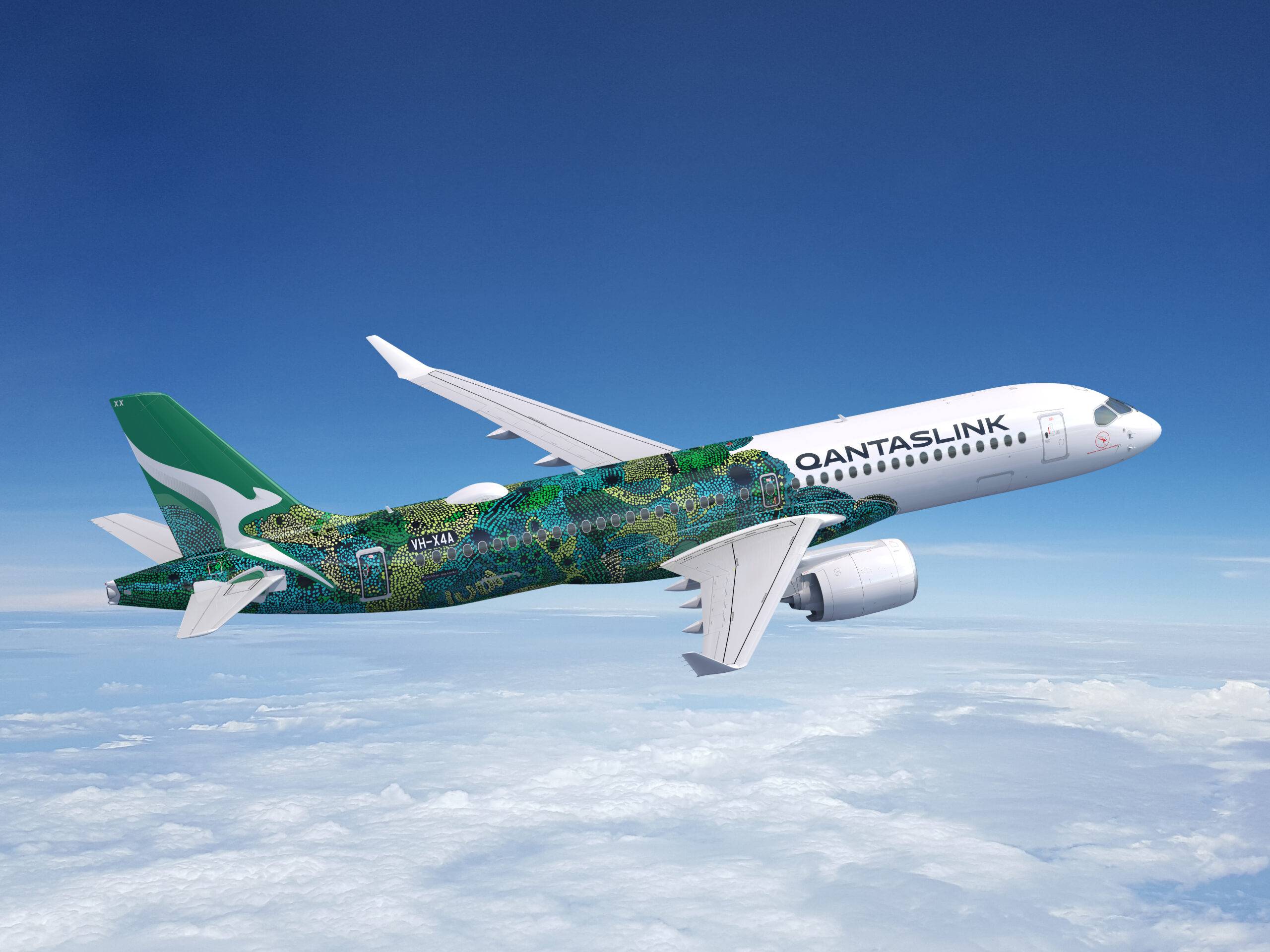QantasLink’s first brand new Airbus A220 aircraft has rolled out of the paintshop at Airbus’ facility in Mirabel, Canada, marking a significant milestone in the Qantas Group’s fleet renewal program.
The aircraft, which is set to arrive in Australia before the end of the year, is the first of 29 A220s that will be delivered to the Group as part of its domestic fleet renewal program to replace and grow its narrowbody fleet.
The next-generation QantasLink A220s will gradually replace the Boeing 717s currently operating flights across Australia. With double the range of the 717, the A220 is expected to open up new domestic and short-haul international routes as more aircraft enter the fleet.
This will be the twelfth new aircraft delivered to the Group in the past 12 months, including eight Airbus A321LR aircraft for Jetstar and three Boeing 787 Dreamliners for Qantas International. More deliveries of multiple aircraft types are expected in the next 12 months, including the first Airbus A321XLR for Qantas Domestic. All burn significantly less fuel, generate fewer emissions and are quieter than the older aircraft they replace.
Over the past six months, this first QantasLink A220 aircraft has come together at the Mirabel facility, with key components produced in other facilities around the world, including wings from the United Kingdom.
The aircraft spent two weeks in the paintshop where a striking Aboriginal paint scheme was applied, making this aircraft the sixth to join the national carrier’s longstanding Flying Art Series.
The Qantas Flying Art Series was launched in 1994 with the unveiling of the first Indigenous livery aircraft, a Boeing 747 jumbo jet named Wunala Dreaming. Leading Indigenous Australian design agency, Balarinji, has worked with Qantas to create the fuselage design for all of the Flying Art Series liveries, in collaboration with First Nations artists and their families.
The latest Flying Art Series livery features the artwork of senior Pitjantjatjara artist Maringka Baker and tells the Dreaming story of two sisters who traverse remote Australia together, covering vast distances to find their way home. The aircraft is named after the artwork Minyma Kutjara Tjukurpa – The Two Sisters Creation Story.
Around 100 painters were involved in completing the livery, with the Airbus teams working with 130 stencils to replicate the detailed designs. It features over 20,000 dots and is the most complex livery Airbus has ever completed for this aircraft type.
Qantas Group CEO, Vanessa Hudson, said the QantasLink A220s would be a game changer for domestic and regional travel.
“These aircraft have the potential to change the way our customers travel across the country, with the ability to connect any two cities or towns in Australia,” said Ms Hudson.
“That means faster and more convenient travel for business trips and exciting new possibilities for holiday travel. A whole new fleet type also means a lot of opportunities for our people to operate and look after these aircraft.”
The A220 (registration VH-X4A) will undergo a series of routine post-production test flights with Airbus as well as being fitted with Qantas-specific equipment before being officially handed over to the airline by the end of the year.
The aircraft will then ferry from Quebec to Australia and join the QantasLink fleet, initially operating flights between Melbourne and Canberra. Another six A220s are scheduled to be delivered by mid-2025.
Click here to access photos of the first QantasLink A220 – Minyma Kutjara Tjukurpa.
Click here for a fact sheet on the livery.
Click here for more information about Qantas’ Flying Art Series.
QantasLink A220 facts
- The QantasLink A220 will seat 137 passengers in a two-cabin configuration with 10 Business seats and 127 seats in Economy.
- The A220s will mostly connect smaller capital cities like Canberra and Hobart, with our major hubs in Brisbane, Melbourne and Sydney.
- The A220 has almost double the range of the 717 at over 6,000 kilometres, meaning it can fly between any city in Australia. The aircraft burns 25% less fuel per seat and CO2 compared to previous generation aircraft.
- The public has been invited to help name the new A220 fleet after Australian native wildlife. (The first aircraft, as part of the Flying Art Series, is an exception to the A220 naming convention).





